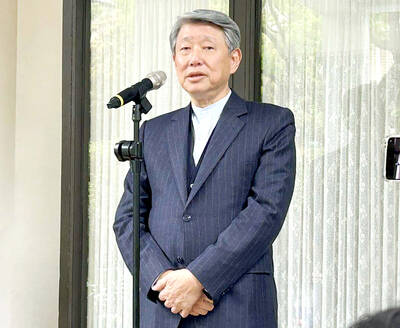Low-priced, regular residential properties in Kaohsiung outperformed five other metropolitan cities in Asia including Taipei and Taichung in Taiwan and Beijing, Shanghai and Hangzhou in China to report the highest rental return of 4.1 percent for last year, a survey by H&B Realty (住商不動產), the nation’s largest real-estate broker by number of outlets, showed yesterday.
Residential properties in Taichung and Kaohsiung saw 3.2 percent and 4.1 percent price hikes respectively last year to average NT$141,000 and NT$107,000 per ping (3.3m2), or a rental average of NT$385 and NT$367 per ping, which represented a rental return of 3.2 percent and 4.1 percent per year, the survey showed.
After a price hike of 26 percent, prices for regular residential properties in Taipei averaged NT$416,000 (US$13,072) per ping with an average rental price of NT$820 per ping, yielding a rental return of 2.3 percent last year, the survey’s findings showed.
The survey included two and three bedroom apartments built more than 15 years ago in Taipei and those built more than 10 years ago in Taichung and Kaohsiung, as well as those built in the past five years in Shanghai and Hangzhou and averaged-priced properties in Beijing’s six major districts.
Among these six cities, residential properties in Shanghai and Beijing were the most expensive averaging NT$535,000 and NT$501,000 per ping respectively, with rental returns of 2 percent and 2.9 percent, after price hikes of 55 percent and 60 percent last year.
In terms of grade-A offices, office properties in both Taichung and Beijing reported the highest rental returns of 5.1 percent, higher than Kaohsiung’s 4.9 percent, Shanghai’s 4.8 percent and Taipei’s 3.1 percent.
Despite high rental returns, H.C. Chen (陳錫琮), the realtor’s Taipei-based general manager, yesterday warned that demand for Taichung city’s commercial rental properties remains weak. On the back of a solid economic recovery, Chen forecast a 5 percent to 8 percent price hike for domestic residential properties by the end of this year although he expressed concern over interest rate hikes in the second half of this year, which he said would spell bad news for home buyers.
Office rents in Shanghai and Beijing outperformed four other cities at NT$2,760 and NT$2,754 per ping, compared to NT$1,276 per ping in Taipei.
Storefront properties in Shanghai enjoyed the highest rental return of 6 percent among the six cities as a result of heavy demand, Mike Zhou (周宇鳴), the realtor’s Shanghai-based general manager, told yesterday’s media briefing. After reporting 150 percent growth in revenues for last year, the realtor vowed to more than double its number of branches in China from 303 to 750 in 2012, Zhou said.
Expressing confidence in growth momentum in both the local and Chinese property markets, company chairman Wu Yao-kung (吳耀焜) heralded H&B’s total of 637 outlets across Taiwan and China — the largest of its peers.
Meanwhile, after the government launched measures to curb property price hikes, sales in 15 major housing projects in Taipei declined by between 30 percent and 50 percent from last weekend, a Housing Monthly magazine survey found yesterday.

MULTIFACETED: A task force has analyzed possible scenarios and created responses to assist domestic industries in dealing with US tariffs, the economics minister said The Executive Yuan is tomorrow to announce countermeasures to US President Donald Trump’s planned reciprocal tariffs, although the details of the plan would not be made public until Monday next week, Minister of Economic Affairs J.W. Kuo (郭智輝) said yesterday. The Cabinet established an economic and trade task force in November last year to deal with US trade and tariff related issues, Kuo told reporters outside the legislature in Taipei. The task force has been analyzing and evaluating all kinds of scenarios to identify suitable responses and determine how best to assist domestic industries in managing the effects of Trump’s tariffs, he

TIGHT-LIPPED: UMC said it had no merger plans at the moment, after Nikkei Asia reported that the firm and GlobalFoundries were considering restarting merger talks United Microelectronics Corp (UMC, 聯電), the world’s No. 4 contract chipmaker, yesterday launched a new US$5 billion 12-inch chip factory in Singapore as part of its latest effort to diversify its manufacturing footprint amid growing geopolitical risks. The new factory, adjacent to UMC’s existing Singapore fab in the Pasir Res Wafer Fab Park, is scheduled to enter volume production next year, utilizing mature 22-nanometer and 28-nanometer process technologies, UMC said in a statement. The company plans to invest US$5 billion during the first phase of the new fab, which would have an installed capacity of 30,000 12-inch wafers per month, it said. The

Taiwan’s official purchasing managers’ index (PMI) last month rose 0.2 percentage points to 54.2, in a second consecutive month of expansion, thanks to front-loading demand intended to avoid potential US tariff hikes, the Chung-Hua Institution for Economic Research (CIER, 中華經濟研究院) said yesterday. While short-term demand appeared robust, uncertainties rose due to US President Donald Trump’s unpredictable trade policy, CIER president Lien Hsien-ming (連賢明) told a news conference in Taipei. Taiwan’s economy this year would be characterized by high-level fluctuations and the volatility would be wilder than most expect, Lien said Demand for electronics, particularly semiconductors, continues to benefit from US technology giants’ effort

‘SWASTICAR’: Tesla CEO Elon Musk’s close association with Donald Trump has prompted opponents to brand him a ‘Nazi’ and resulted in a dramatic drop in sales Demonstrators descended on Tesla Inc dealerships across the US, and in Europe and Canada on Saturday to protest company chief Elon Musk, who has amassed extraordinary power as a top adviser to US President Donald Trump. Waving signs with messages such as “Musk is stealing our money” and “Reclaim our country,” the protests largely took place peacefully following fiery episodes of vandalism on Tesla vehicles, dealerships and other facilities in recent weeks that US officials have denounced as terrorism. Hundreds rallied on Saturday outside the Tesla dealership in Manhattan. Some blasted Musk, the world’s richest man, while others demanded the shuttering of his